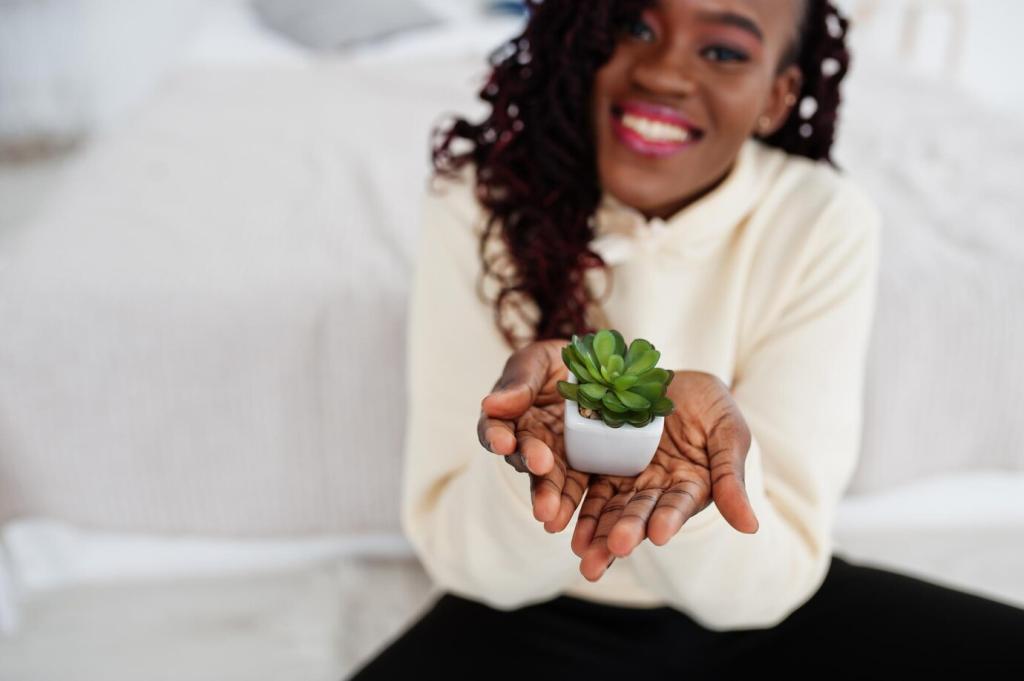Breathe Easy: Non-Toxic Materials for Furniture Restoration

Decoding VOCs and Off-Gassing
VOCs are volatile organic compounds that evaporate into the air as coatings cure. Even low-VOC products can off-gas initially. Prioritize zero- or ultra-low-VOC formulas and natural binders, and allow generous curing time with cross-ventilation before moving pieces back indoors.

Reading Labels with Confidence
Look for full ingredient disclosures, not just marketing terms. Certifications like GREENGUARD Gold, EU Ecolabel, or MADE SAFE indicate stringent emissions or ingredient standards. Check safety data sheets, seek pigments over dyes, and prefer water as the primary solvent whenever possible.

Choosing Safer Bases and Binders
Favor simple, time-tested materials: milk paint, pure tung oil, polymerized linseed oil, beeswax and carnauba blends, hide glue, and waterborne finishes with verified low emissions. When solvents are used, pick citrus-derived or alcohol-based options and ventilate thoroughly during application and curing.
Paints and Colorants That Skip the Harsh Stuff
Milk paint combines casein (milk protein), lime, and natural pigments to create a breathable, matte finish that bonds beautifully to wood. It mixes from powder, distresses authentically, and dries quickly. Tried it? Share your favorite color recipes and layering tricks with our community.

Traditional hide glue, revered by luthiers and conservators, is reversible with heat and moisture, enabling careful future repairs. It grips joints firmly, creeps minimally, and ages gracefully. If you’ve rescued a wobbly chair with hide glue, drop a photo and your clamping tips below.
Adhesives and Fillers You Can Trust
Casein glue, made from milk protein and an alkaline activator, forms a durable, low-odor bond suitable for veneers and substrates. Rice paste is gentle, archival, and ideal for delicate papers and fabrics in drawer liners. Share your favorite mixing ratios and application tools.
Adhesives and Fillers You Can Trust
Natural Oils and Waxes for Honest Protection
Pure Tung Oil, Deeply Nourishing
Pure tung oil polymerizes into a water-resistant, food-contact-safe finish when fully cured. Wipe on ultra-thin coats, allow oxygen and time, and burnish between layers for clarity. Curious about drying rooms and temperature control? Join our newsletter for a deep-dive curing checklist and schedule.
Polymerized Linseed Oil Without Metallic Driers
Choose polymerized or stand oil versions that cure faster without heavy-metal driers. They highlight figure elegantly and accept wax topcoats. Always patch-test for ambering on pale woods. Tell us if you prefer a satin sheen or a hand-rubbed matte and why.
Beeswax and Carnauba Blends
Beeswax offers warmth and ease of repair, while carnauba adds hardness and sheen. Applied over cured oils, they buff to a tactile finish that invites touch. For slip-prone surfaces like chair seats, modulate the ratio. Share your polishing routines and cloth recommendations.
Start with Mechanical Methods
Begin with scrapers, card scrapers, and careful sanding to minimize chemicals. A low-heat gun can release failing varnish without scorching. For pre-1978 paint, test for lead and use safe containment. Have a reliable scraper profile? Post your favorites and sharpening technique.
Citrus-Based Solvents and Soap
Citrus-derived solvents (d-limonene) can soften residues with far less odor when used with ventilation. Follow with diluted castile soap and warm water to lift grime. Always manage oily rags safely by laying them flat to dry. Share your before-and-after cleaning wins with us.
Air Quality, Safety, and Curing Wisdom
Create a cross-breeze with a window fan exhausting outward and a second opening supplying fresh air. Schedule finishing during low-humidity hours and keep doors closed to the rest of the house. Want our printable airflow checklist? Subscribe and we’ll send it to you.
